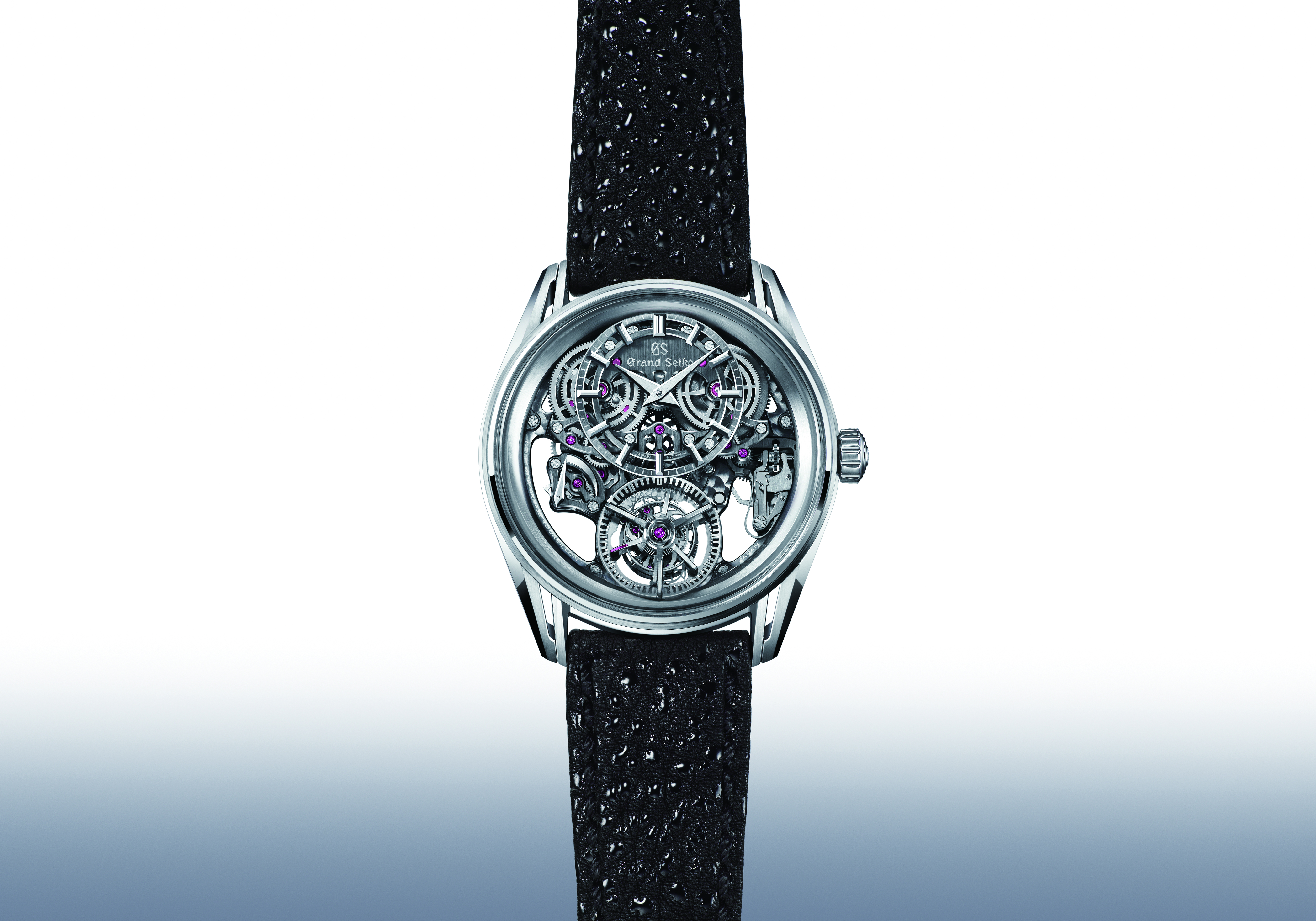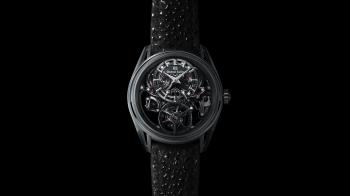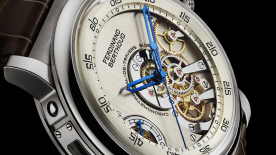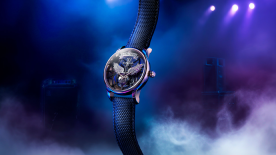Grand Seiko is the giant of Japanese fine watchmaking, yet the brand had never yet offered a watch equipped with a tourbillon. It was all the more eagerly anticipated since the unveiling of the T0 Constant-Force Tourbillon calibre in 2020, whose constant-force mechanism takes the form of a remontoire. We thus had to wait a little longer for the final version of this concept, Calibre 9ST1, and the watch it drives, the Kodo Constant-Force Tourbillon. This concept was nonetheless full of promise. Its structure, the shape of its cage, its specifications, and its finishing even exceeded what many enthusiasts expected from Grand Seiko. Especially since it was the very first open-worked model.
Body
Grand Seiko has been able to promote the quality of its finishes, the solidity of its construction and the sobriety of its design all over the world. However, if you take a quick look at the Kodo, which means heartbeat in Japanese, it does not resemble the brand's other products. The simple fact that it is an extremely airy open-worked calibre is enough to set it apart. This position is symbolized by its complications, as well as by the extreme exclusivity of its production in a 20-piece limited series. It is also reflected in the choice of materials used to make the case, which is 43.8 mm in diameter and 12.9 mm thick. Platinum is a very strong symbol of preciousness in the codes of the Japanese watchmaker. Grand Seiko's Brilliant Hard Titanium offers both lightness and rigidity, as well as a polishing technique named Zaratsu that is perfectly mastered by the brand. This metal, that is more difficult to scratch, is used for the outer parts of the case, serving to protect the softer platinum. Both are combined in open-worked lugs with a unique profile.

Heart
In addition to featuring extremely sophisticated curves and lines, this caliber incorporates the first Grand Seiko tourbillon. For those who know that Credor has its own tourbillon and that it is also part of the Seiko group, it should be noted that there is no connection between the two. This one-minute tourbillon, with its 100% in-house 4 Hz regulating organ, is an entirely original creation. It is coupled with a constant-force mechanism, located along the same axis as the balance. This device ensures a perfectly regular flow of energy to the escapement, which is the prerequisite for enhanced isochronism and thus more accurate running. It is all the more efficient because it is reset every second. One can count on one hand the number of one-second remontoire on the watchmaking planet... Moreover, it is close to the balance-wheel, which limits the friction inherent in this device and does away with losses – and hence variations in torque, which the winding mechanism seeks to eliminate. They are connected to two barrels with a ratchet wheel whose design is inspired by the Japanese ‘mitsudomoe’ symbol, which signifies the swirling movement of water. The use of the symbol is a nod to the tourbillon, which in French means whirlwind. They provide 72 hours of power reserve, which can be read on an indicator located on the outer rim of the movement, at the edge of the large void surrounding the cage.
Features
The creation of the Kodo and its movement is not however exclusively based on quantitative and technical criteria. The aesthetic approach is absolutely fundamental to the Grand Seiko creative process. While definition of skeletonization is perhaps the most obvious – because of its scope, the amount of work it requires and its visual prominence – the most striking is undoubtedly the integration of the constant-force carriage and the tourbillon carriage. Its six arms are machined in the shape of... a belvedere, a dome, a bell – whichever image is most vivid for you. Their flexible shape is the product of meticulous shaping after machining. Their complex, twisted, plunging profile is the result of patient manual beveling. The last area of improvement is the unique sound of Caliber 9ST1: the escapement is in action eight times per second, the constant-force mechanism only once. Every eight “ticks” it creates a steady and even tock – a feature so distinctive that the musical terminology of its time value is engraved on the back of the movement.
Soul
Surface finishes thereby create the illusion that these six arms are a single unit, whereas they are in fact spread between two levels, corresponding to two different technical elements. The first three, located furthest out, are the winding arms. The other three, located slightly further in, bear the tourbillon. Since the remontoire and the balance wheel are built on the same axis, it is logical that the structures that carry them appear as a single, uniform unit. And this is where the profound nature of the Kodo plays its role – in the perfect blend of aesthetics and technique suffused with the discreet and skilled highlighting of rare sophistication.





